Maker’s Hub Taking Shape at Gruss Center at Lawrenceville
Sasaki's newly-designed maker spaces at The Lawrenceville School encourage students to forge creative, hands-on projects, together.
 Sasaki
Sasaki
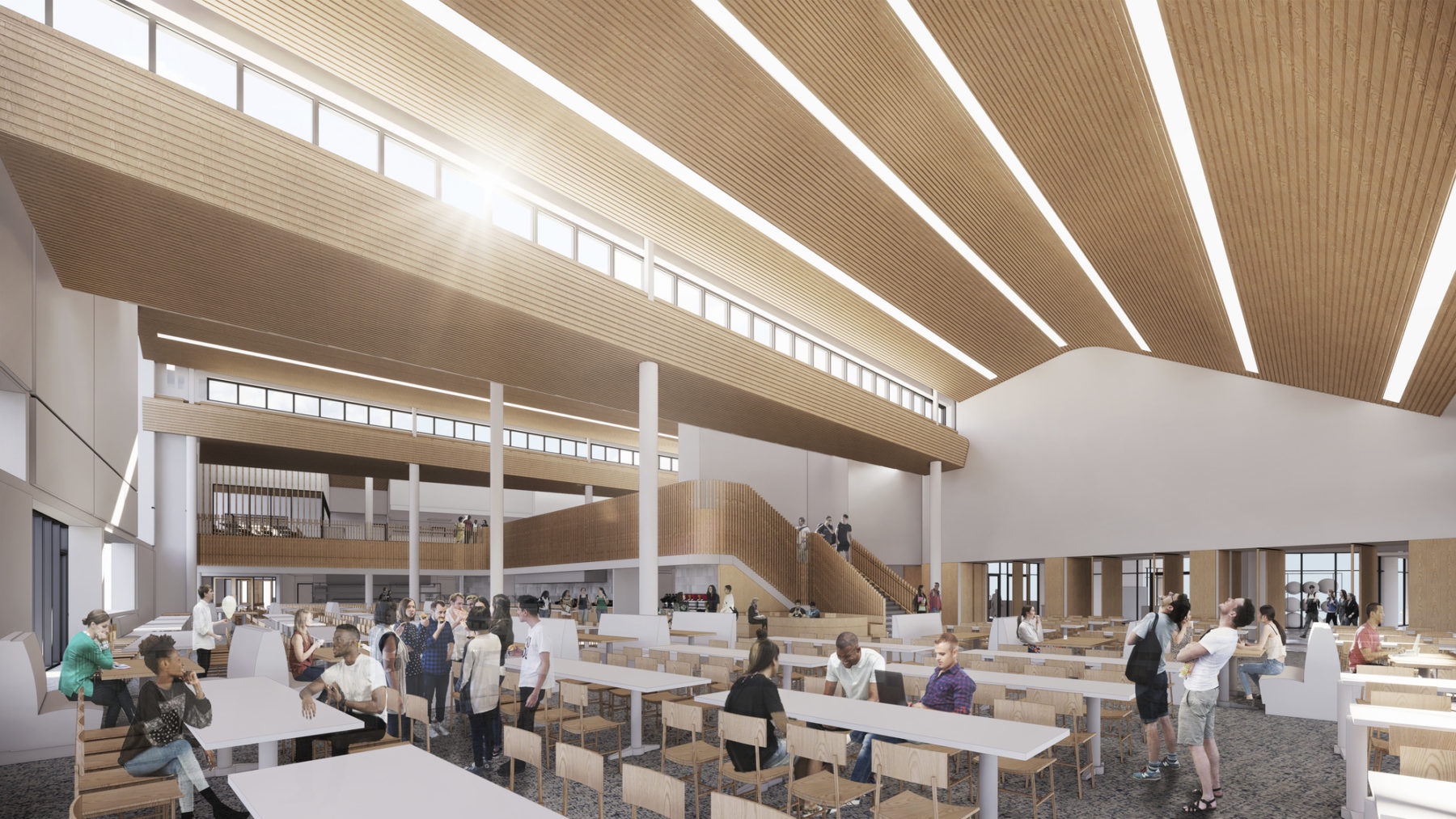
By now, every city, company, and school has implemented social distancing policies and vigilant hygiene practices in response to COVID-19. While living in a society mid-pandemic has become the new norm, many have faith that in the long-term, the social society we once knew will return, albeit one radically changed. When it comes time to rebuild our world post-COVID, we have a unique opportunity to rethink how we approach wellness as a whole: our relationship to space, to technology, and to each other.
Schools like The Lawrenceville School have thought deeply about how community, technology, and wellness impact one another on their campus. Beyond implementing a time-sensitive response to COVID-19, Lawrenceville is prepared to foster a holistic notion of wellness on their campuses to prepare the next generation of students for college, professional, and community life.
Generation Z faces a particular set of well-documented challenges: social media contributes to a quickening pace of life, one in which students have packed schedules and little time to connect with themselves or those around them. Additionally, new graduates are entering a workforce that requires entrepreneurialism, risk tolerance, a life-long learning mindset, and new skillsets beyond what traditional education has taught for hundreds of years. “We’re seeing colleges and independent schools tackle similar issues in the age of technology and a frenetic pace of life,” said Sasaki principal Vinicius Gorgati, AIA. “And independent schools are often ahead of the curve in anticipating shifts in pedagogy and life on campus because they’re encountering the next wave of students’ evolving needs that much sooner.”
Sasaki’s designers and planners are seeing up-close how independent schools like The Lawrenceville School, Deerfield Academy, Greenwich Academy, and others are tackling some of the same, big-picture challenges that clients in higher education face across the country and around the world. By redefining what they consider to be wellness, these schools are finding ways to create real-world environments and programs that strengthen in-person community, mitigate the pressure of a rapid pace of life, and equip students with thoughtful, process-oriented attitudes towards their work. These innovations are all the more important as COVID-19 prompts schools to place an even heavier emphasis on students’ physical and mental health.
“Integrating wellness and well-being support is a top concern for every educational client we work with,” said Sasaki principal Bill Massey, AIA, LEED AP. “In the wake of COVID-19, now more than ever we’re thinking about how students manage their busy workloads, and the ways that schools can think about how they structure their wellness resources and built space and how these affect the cadence and quality of students’ lives.”
Forced distance during the pandemic has prompted many of us to reflect on the importance of social connection and community. Instead of pulling us away from the real world, our devices have become vital tools to connect with others. Once we’ve closed the six-foot gap, how can we reinstate a healthy relationship with technology so that it continues to be a tool rather than a distraction?
Lawrenceville’s investments in built space show that they are embracing the changing rhythms of academic life that accompany those in Generation Z. With social connection a direct message away, technology acts as a social veil—an easy excuse to take a rain check on the real world and instead find social support or escape within a virtual space. In response to the urge to retreat, Lawrenceville is pushing forward with spaces that bring students together in new ways. The Tsai Dining and Athletic Center (TDAC), which is currently under construction, unites athletics, fitness, and dining under one roof. “Tsai is less of a sports center and more of a community building,” said Gorgati. The building invites students into the same space for different purposes, not only facilitating community interaction, but also sending a larger message about wellness: a healthy lifestyle is interconnected, and finding harmony between exercise, diet, and social life should be within reach.
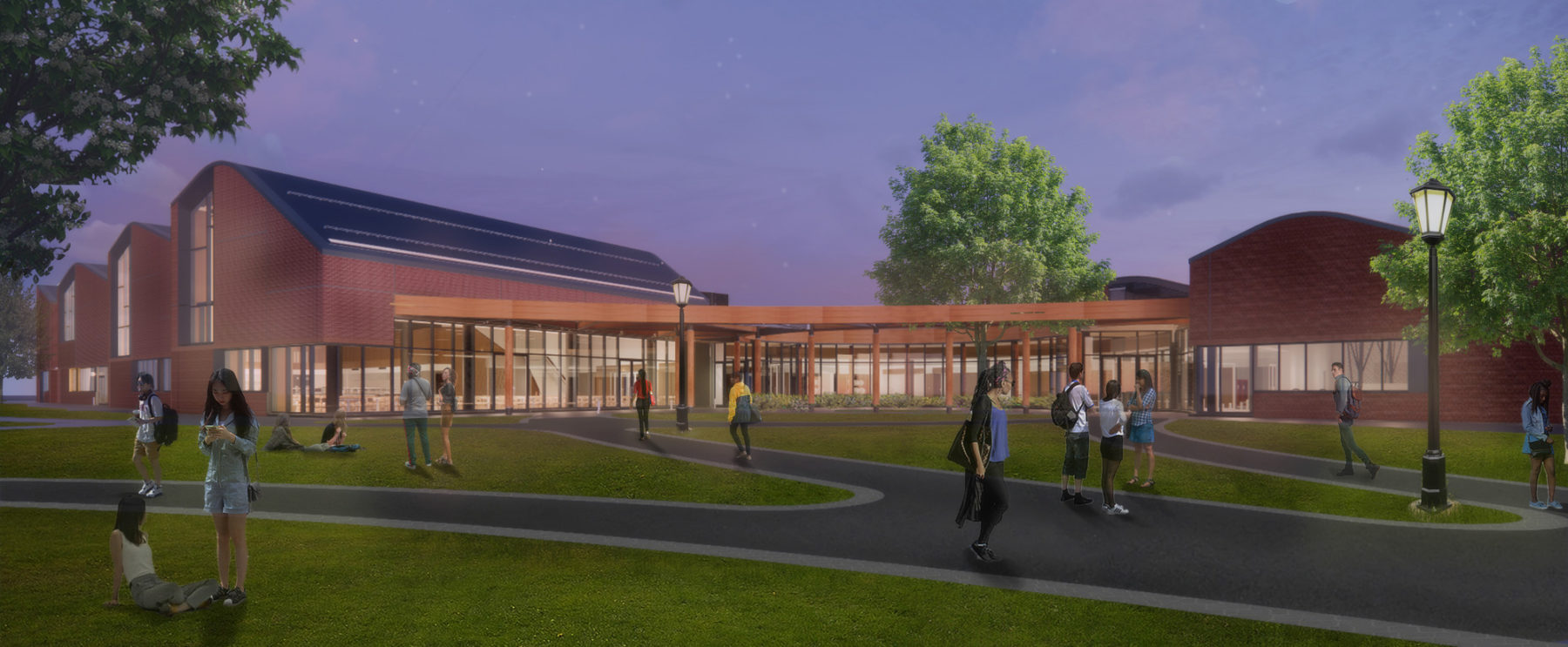
The Lawrenceville School Tsai Dining and Athletic Center
Lawrenceville’s recently completed Gruss Center for Art and Design (GCAD) takes a similar approach to strengthening community in a multi-use space. A new glass connector joins two existing structures (a museum/art gallery and a classroom building), complementing classrooms with 15,000 SF of maker spaces and flexible use areas. The primary goal of GCAD is to bring together students engaging at a variety of levels—both curricular and extracurricular, and across academic disciplines—to collaborate under creative and tactile learning methods and share an appreciation for the making process. The design of the building promotes this collaboration: glass walls bring transparency to the making process and invite students to join. The space also encourages students to actively engage with technology as a tool rather than a diversion. Students will use virtual reality, robotics, and computer-based work as forces for innovation within their projects.
For the upcoming school year, Lawrenceville plans to enforce social distancing practices across their campus. While community gathering will look different, the values that TDAC and GCAD instill—including holistic wellness and interdisciplinary collaboration—will be even more welcomed as the school emerges from the pandemic.
Other independent schools are looking to foster community through campus design, as well. Sasaki recently worked with Deerfield Academy to create a 132,000 SF athletic center that includes an indoor field house, volleyball venue, crew tank, and ice hockey rink. Though the building was largely a collection of sports venues, Deerfield was intentional in making sure the building served the entire campus community, not just their student athletes.
The design includes formal and informal meeting spaces, hangout spaces, and study spaces that are just as engaging as the sports venues. To achieve this, Sasaki created two main pedestrian connectors that link all of the spectator spaces together, making the journey between each space as inviting as the destination. The connectors are intentionally spacious to allow for informal gatherings; friends can meet in the two-person seating areas along the connection back to the existing building, while larger groups can gather at the amphitheater seating in the building’s main spine. The new facility unites athletes with the general student body, encouraging the type of cross-community interactions that we lack in quarantine. The large venues also offer a variety of functional considerations that Deerfield can employ during the COVID-19 pandemic, still serving as effective community spaces while conforming to social distancing measures.
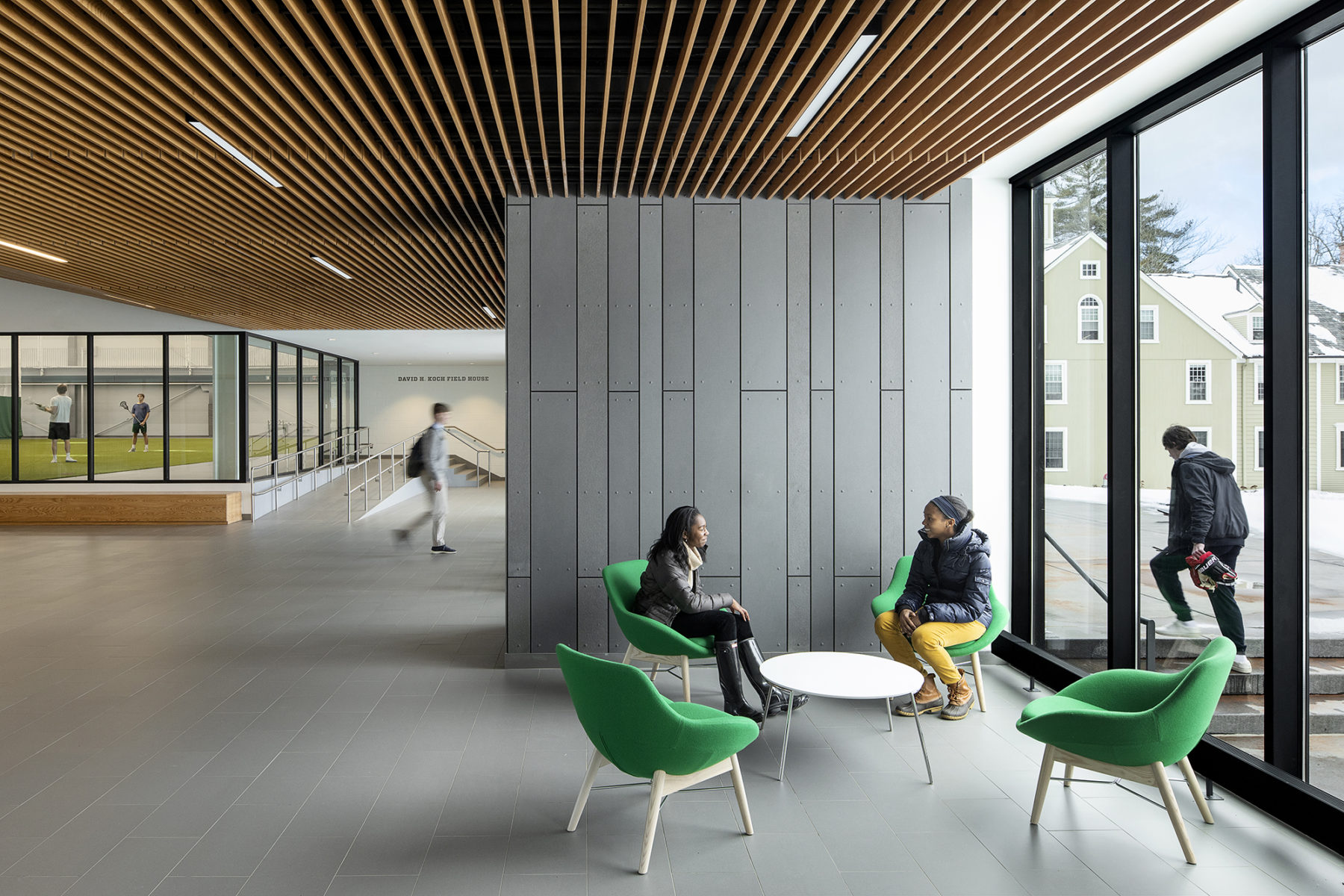
Seating areas encourage informal social interaction along a new connector that links the athletic facility to an existing dining cafe
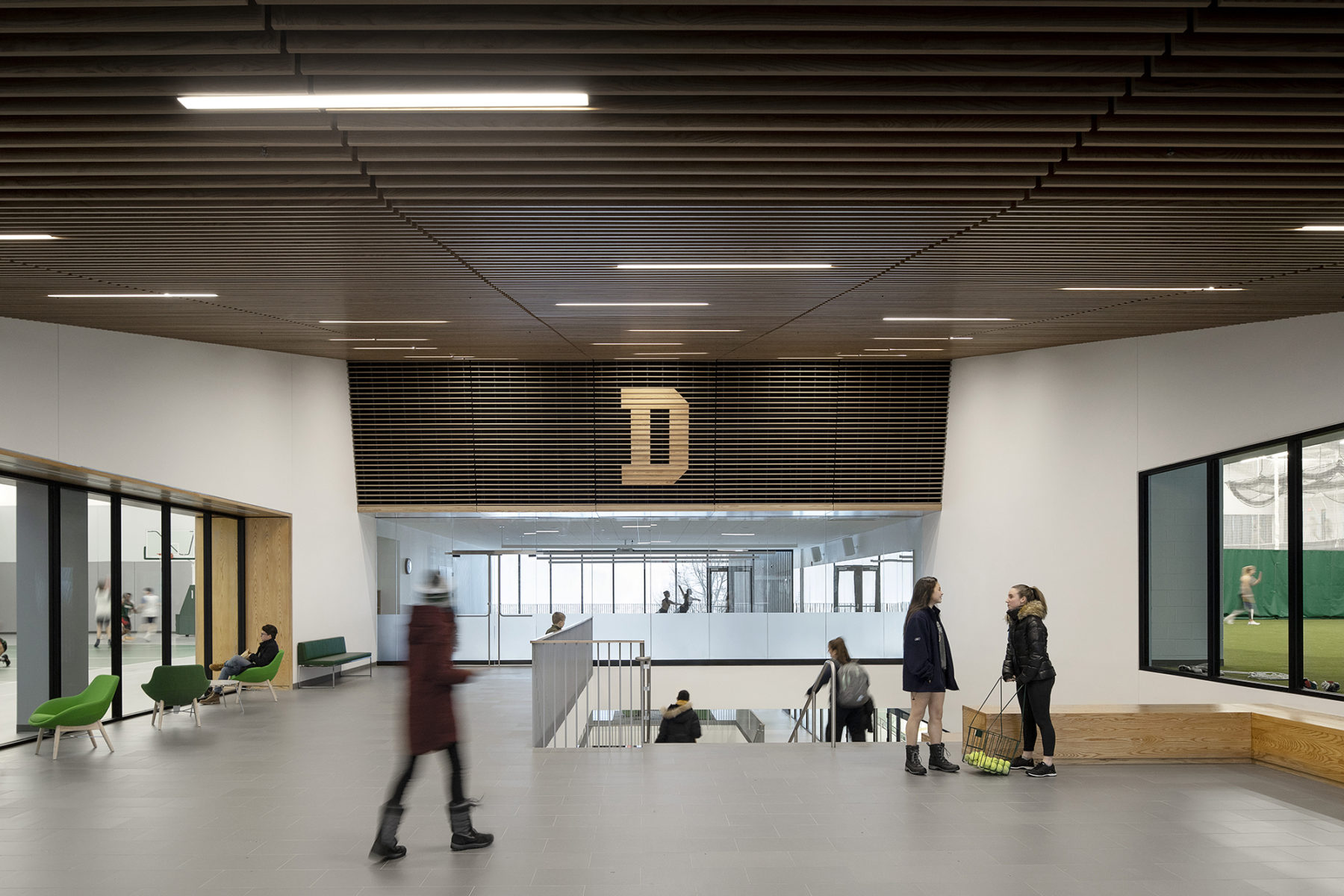
The main pedestrian spine allows views into all major sports venues and offers a variety of formal and informal engagement opportunities for the entire Deerfield community
In working with Greenwich Academy to develop a master plan, Sasaki thoughtfully planned buildings and strategic renovations to improve connections across learning environments and the landscape. Planners also prioritized gathering space in every recommendation, recognizing that community is integral to the Greenwich experience. As the pandemic slows and the master plan is implemented, students and faculty will have an even greater appreciation for the plan’s core values of connection and community.
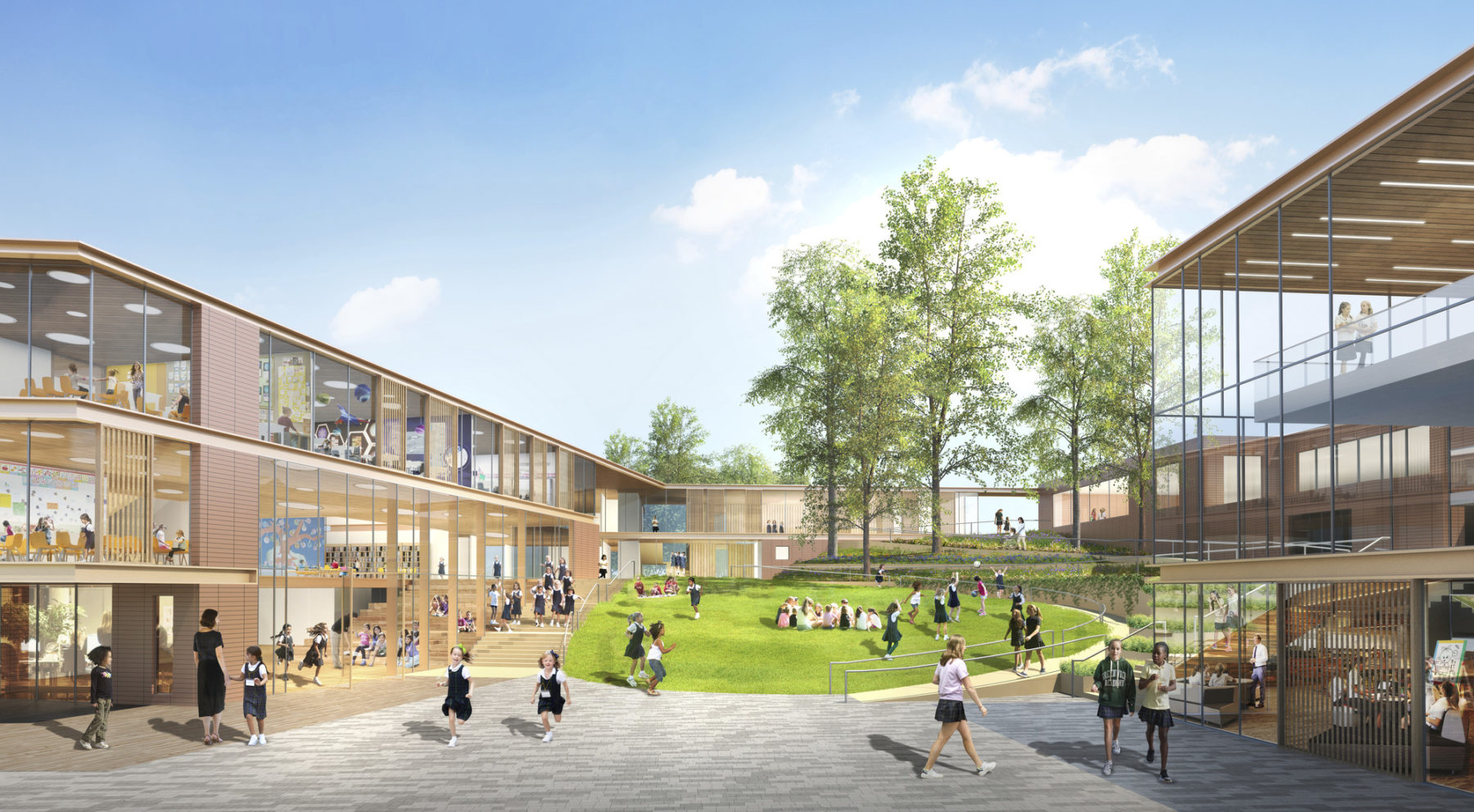
The Lower School Courtyard at Greenwich is a hub of activity throughout the day as students move through the campus or sit and gather in the landscape
Lawrenceville, Deerfield, and Greenwich are finding ways to encourage a collaborative and balanced lifestyle in the design of their campuses. Although these spaces may not be in use in their full capacity, when the time comes, the schools are prepared to rebuild campuses that prioritize health, wellness, and community—things we’ve learned to be vital to our daily lives.
As COVID-19 began to spread, schools had to make a quick adjustment to online learning. While many teachers and students found innovative ways to fill in the gaps, it’s apparent that an in-person classroom is impossible to replace. Sasaki designers have worked with independent schools to ensure that when they welcome students back to campus, they have the flexibility to encourage collaborative learning long after the pandemic.
In secondary schools and beyond, the pedagogy has branched out from traditional learning methods such as lecture and discussion to incorporate more modalities of learning. That shift is linked to demands established well beyond the schooling years: modern workplaces now value outside-the-box thinking and hands-on approaches to problem solving. Schools are proactively creating learning environments that respond to those needs—chief among them being maker spaces, which include tools like wood shops, 3D printers, and laser cutters as well as virtual reality labs. Maker spaces spark discussion on how fabrication technologies can facilitate new methods of learning and encourage students to develop the self-starter, growth-centered mindset that is necessary for their career.
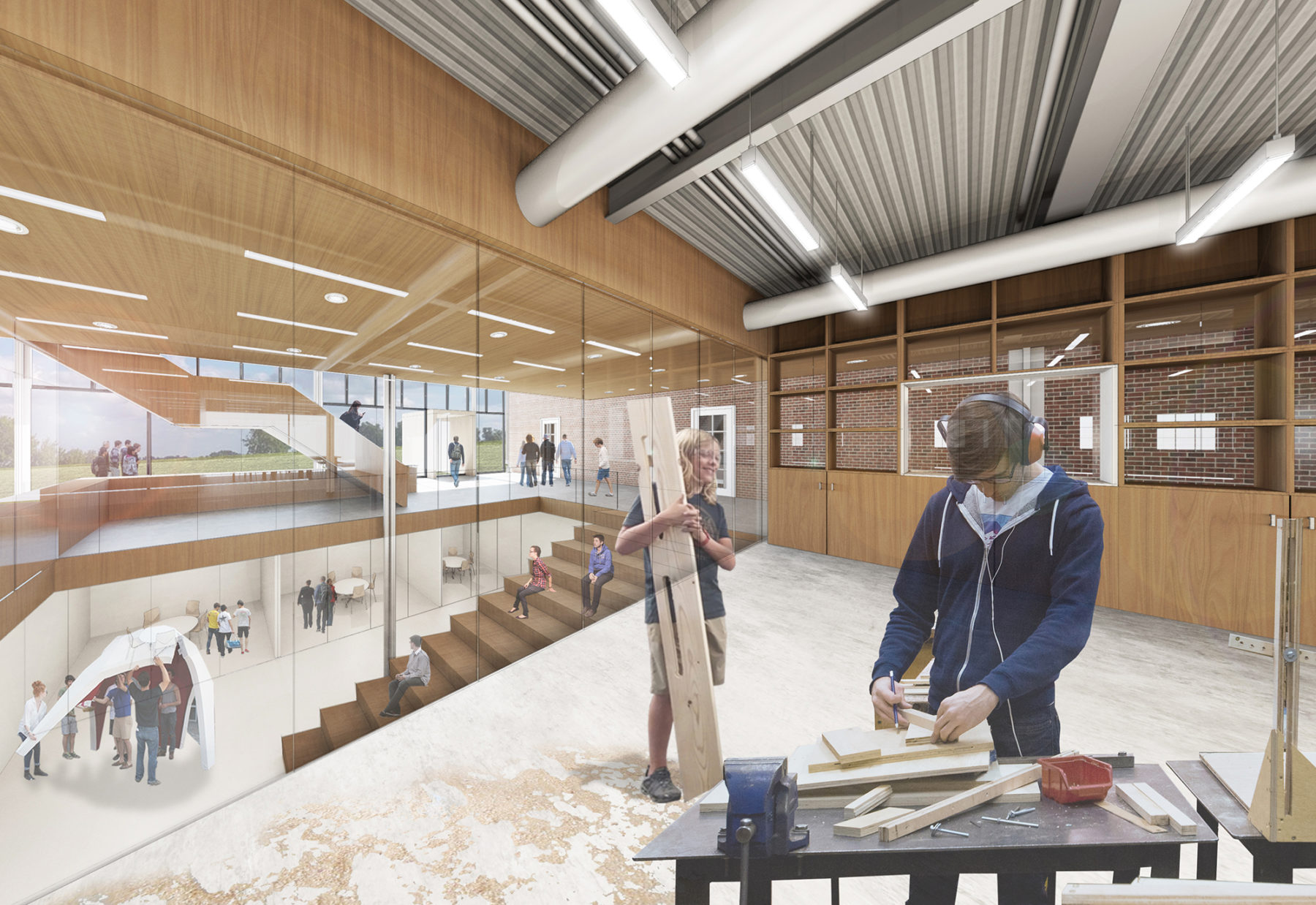
A maker space at GCAD
Lawrenceville hopes to leverage their new maker spaces at GCAD to build upon the Harkness method of discussion traditional to the school. On campuses around the country, the Harkness table has become a symbol that stands for the kind of open dialogue and learning from peers that defines an independent school education. Around the Harkness table, students discuss material in small groups, using collaboration and equal share of voice to approach problem solving. Maker spaces might be the answer to bridging an important gap between discussion and practice: “The act of making changes the way we understand the learning process,” said Sasaki senior associate Marta Guerra-Pastrián, lead designer for GCAD. “When you make something with your own hands, you realize you can make a change in the world.” Incorporating making into the learning process changes the physicality of the Harkness method, giving new meaning to learning material through an iterative design process.
“The act of making changes the way we understand the learning process. When you make something with your own hands, you realize you can make a change in the world.”
Marta Guerra-Pastrián
Engaging in this type of learning sparks a mindset change in students. In an increasingly competitive world, schools recognize that being high-achieving is only one part of a much bigger picture—a learning mindset and self-starter attitude are both integral to success in college and beyond. Stephen S. Murray, Lawrenceville’s Head of School, agrees: “We are graduating students into a world where there are no simple solutions; they need to have a range of intellectual and practical skills in their toolbox,” he says on the GCAD website. Bringing designs to life in maker spaces demonstrates the value of tactile problem solving, inspires confidence in students, and armors them with the growth mindset and entrepreneurial spirit that is sought after in today’s job market.
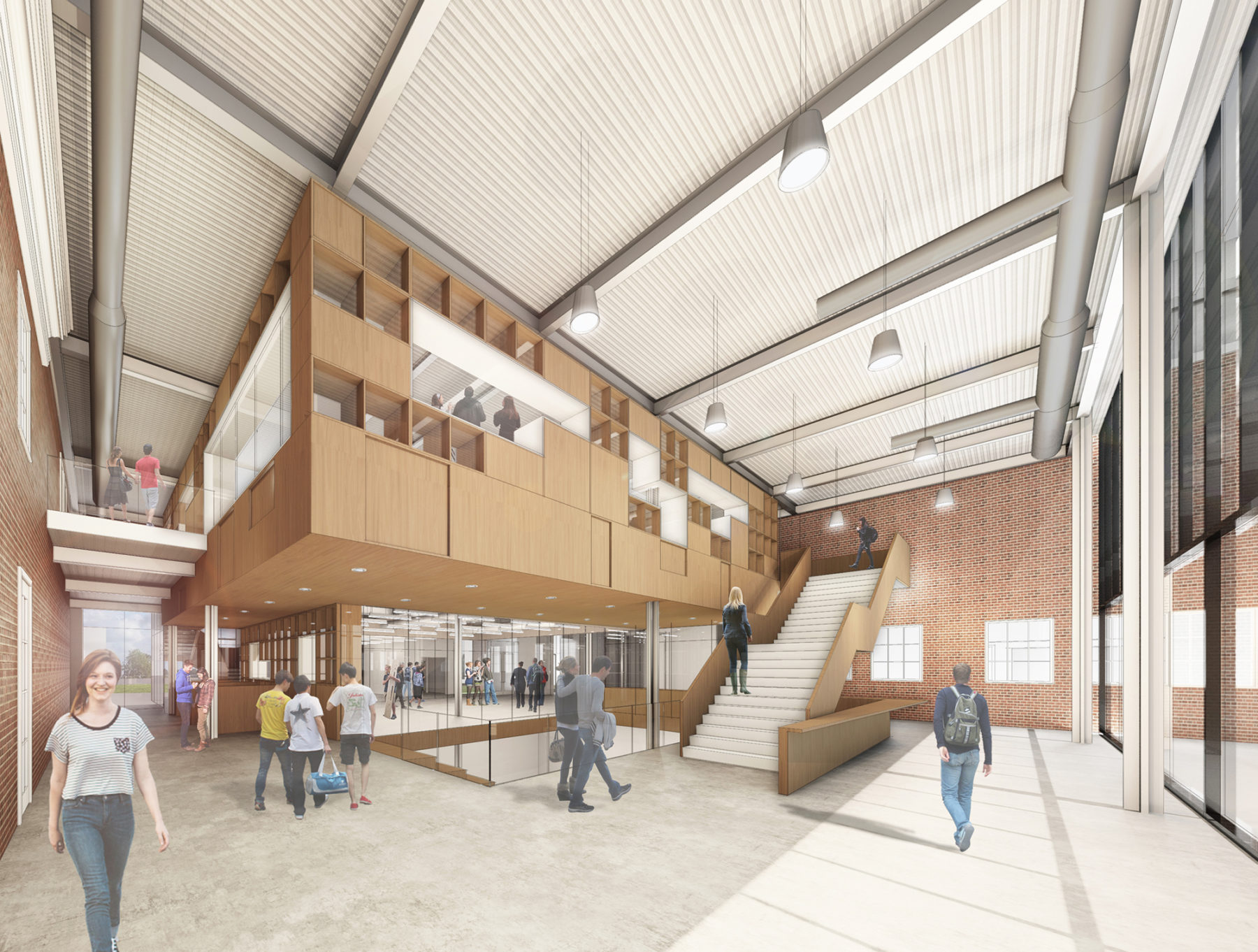
The entryway at GCAD
Lawrenceville’s investments in innovative built space show that they are at the forefront of thinking about approaches to education that prioritize wellness and holistic learning. By finding new ways to build community and putting a spin on traditional collaborative learning, TDAC and GCAD show how promoting wellness on a campus manifests as conscious design choices. As we emerge from a pandemic and a period of collective reflection, these buildings demonstrate the administration’s commitment to improving students’ lives at Lawrenceville and preparing them to enter college and their careers with confidence.
In the wake of COVID-19, education will be changed for good and the campuses that have developed over years will change in kind. If anything has become apparent during the pandemic, it is that we see even more value in what we have lost: community living and collaborative work methods. While so much of the change coming in the next few years remains undefined, the renewed focus on wellness, physical and mental health, digital connectivity, new forms of collaborating, and resilience in the face of uncertainty will only become more ingrained in our collective psyches.
As independent schools and institutions of higher education prepare to reopen, both community and learning spaces will take on new and evolving forms. While the uncertainty around it is daunting, the prospect of a reimagined campus is also exciting. The opportunity to significantly reshape learning spaces for a new age does not come along every day, and the potential for positive change is one thing we can hope for.
Sasaki's newly-designed maker spaces at The Lawrenceville School encourage students to forge creative, hands-on projects, together.
A conversation between Sasaki principal Vinicius Gorgati and Lawrenceville School Head Master Steve Murray